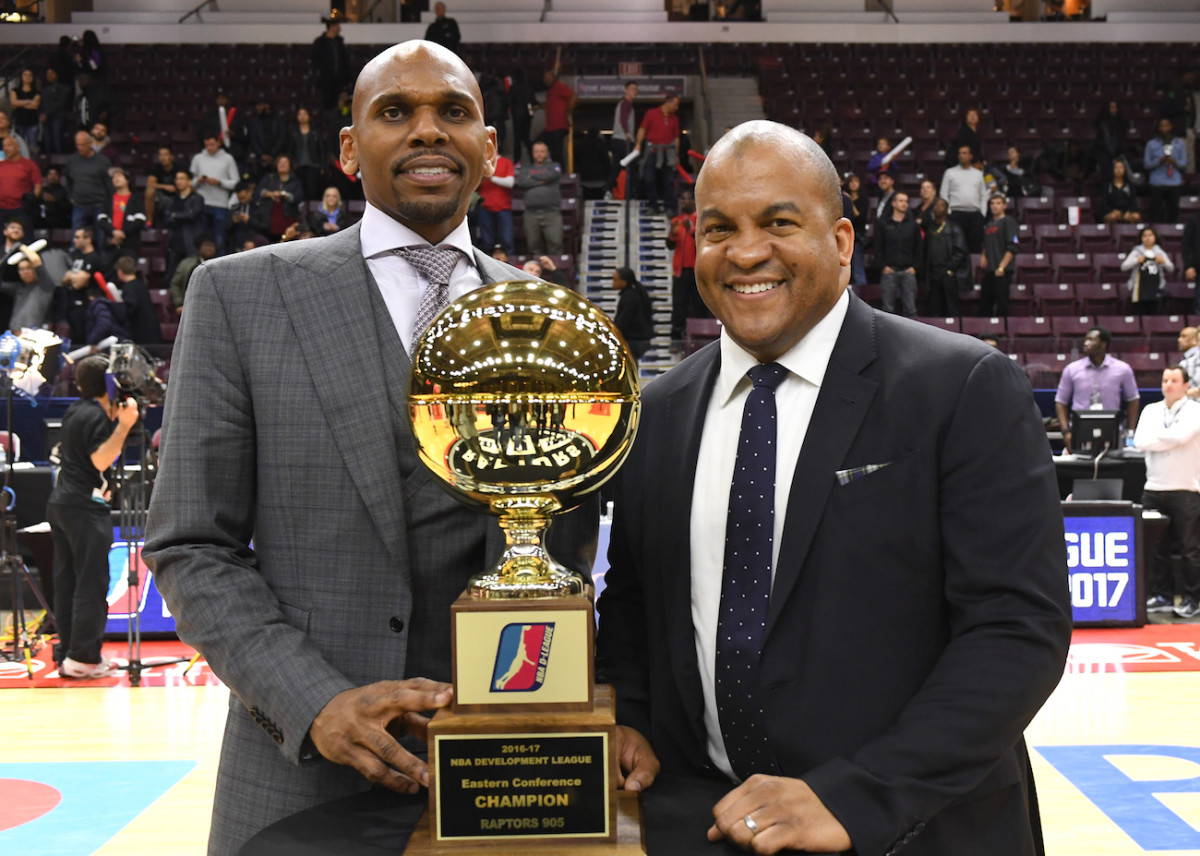Catching Up With NBA G League President Malcolm Turner

When I was at the NBA G League Showcase in Mississauga, Ontario, in January, I spoke with league president Malcolm Turner. I asked him about how he developed his love of sports, his role at the NBA, and how the NBA G League is evolving. Hint: They have big international expansion plans.
And speaking of global expansion, the first international exhibition game over NBA All-Star Weekend will take place on Sunday, February 18, at 4:30 p.m. ET at the Los Angeles Convention Center. The NBA G League International Challenge will replace the traditional NBA G League All-Star Game, which debuted in Las Vegas in 2007.
One of things Turner enjoys most about the G League is seeing the progression of players and helping make NBA dreams come true. “I love going to an NBA game and taking a look at the player roster and the coaching staff and the officials,” he said. “You see the G League connections in terms of: Those four or five players used to play in the G League, or those coaches coached in our league last season.”
With close to 45% of NBA roster players today having G League experience, the G League is more relevant than ever.
When did you first know that you wanted to work in sports?
I was halfway through college at UNC-Chapel Hill. I interned at a company called Advantage International; at the time it was one of the largest sports marketing agencies and worked with brands like BMW and IBM on the sports marketing side. But they also represented a lot of athletes, like Moses Malone. That was really my first exposure and the first time the light bulb went off: Wow, there is a business side to sports, and this might be interesting as a career option for me.
Did you play basketball as a kid?
I played everything as a kid. You name it, I probably played it. But I loved basketball. I grew up in Atlanta and grew up on Atlanta Hawks basketball—Doc Rivers, Dominique Wilkins, Spud Webb, and Kevin Willis. Those were the Omni days for the Atlanta Hawks, all those Hawks versus Celtics battles. That is when I got connected to the game in a meaningful way.
What is it like working for NBA commissioner Adam Silver and deputy commissioner Mark Tatum?
They have been so supportive of me and what we are doing with the G League. We have had a lot of growth in a very short period of time. I would tell you it is a big team effort. Leadership matters, and it starts at the top. Adam and Mark have been terrific in terms of helping to set the direction and provide us with the resources that we need to build a property that we think is really special and creating value within the NBA system. Part of what we stand for is that we help NBA dreams come true. Whether you are a player, a coach, a referee, a trainer—if you want to participate in the game at the highest level in the NBA, the G League can be a launching pad.

How have international players changed the competition in the G League?
We are really on the front end of seeing that impact on our league. Less than 10% of our players are international, but that’s going to grow quickly. We recently announced that we are exploring launching an NBA G League team in Mexico City, so stay tuned to see if we are able to get that across the line. At NBA All-Star in Los Angeles, we are going to host the Mexico national team. G League players are now fulfilling national team opportunities with USA Basketball. That’s an exciting development for us, as we are representing the country in the current competition calendar against Puerto Rico, Mexico, Cuba, and others. We are starting to make our own proactive efforts internationally, but as the league is growing, we are also going to see [more] international players.
Are there any new exciting developments in the G League? How about creating a four-point shot? How about an 11-foot hoop?
First of all, all ideas are on the table. I don’t think we are at the point right now for a four-point shot. It’s funny, way back in 1979, when the three-point shot was introduced, that was just so radical, but now it’s a huge part of today’s game. We are a test bed. We are always open to new ideas and to trying things and tinkering with the game. We have embraced that positioning, where we can try new rules or new initiatives. We have a coach’s challenge in the NBA G League; you don’t see that at the NBA level. We even took a look at four-person referee crews earlier this year, which was interesting.
Do you ever have time to watch and enjoy the games?
I do, but not as much as I like. I love the game, and I love being around the game. I travel a lot to both G League and NBA games because I really believe in being present and being out with fans and players and coaches and our partners. It’s a lot of fun. I could always do more, but I am really grateful. It’s a fun job and a fun game to be around.
This interview has been edited for length and clarity.
Photographs by (from top): Ariel Nava/NBAE/Getty Images; Ron Turenne/NBAE/Getty Images
